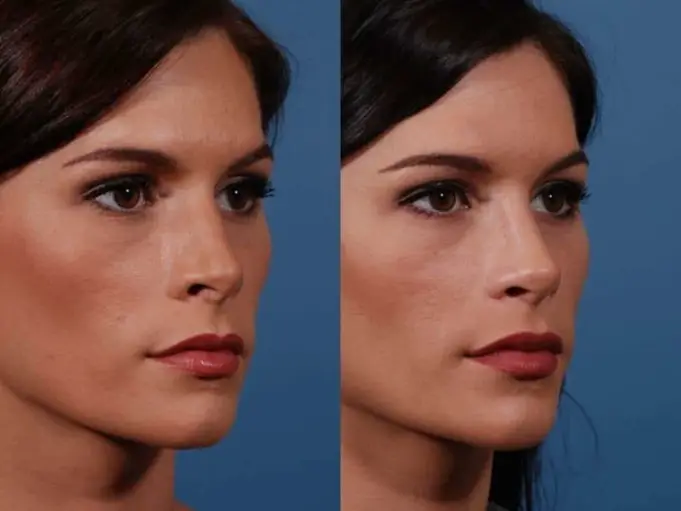Rhinoplasty is the technical, medical term for what most of us call a “nose job.” Basically, it is a surgical procedure that changes the shape and size of your nose.
Most people seek out rhinoplasty surgery for aesthetic reasons, but there are also situations where a nose job is required to help correct a medical condition.
Most of the time, a rhinoplasty procedure consists of reshaping the bone, cartilage and various other tissues in the nose to create the new look.
Common Physical Reasons
Most of the time, a nose job is a voluntary cosmetic procedure, sought out because the patient is unhappy with the size or shape of their nose.
Some of the common physical reasons patients cite when seeking a nose job include:
- A nose that is too wide
- A nose that is too long
- A nose that is too pointy
- An upturned nose
- A bumpy nose
- A crooked nose
- Nostrils that are too big
- Nose is not balanced with the rest of the face
Common Psychological Reasons
Anyone who has gone through life with a nose that is noticeably out of proportion knows that those physical reasons lead to psychological reasons for wanting rhinoplasty surgery. Some of the common ones that patients use include:
- Lack of self-esteem
- Lack of self-confidence
- Being teased or bullied
A nose is just a nose, but it is also right there in the middle of your face for all to see. A lack of self-confidence and self-esteem can lead to an unwillingness to socialize or take part in school activities that might cause serious issues in the future.
Common Medical Reasons
Of course, it isn’t all about the look and the emotions. It’s important to remember that your nose is also necessary for breathing, and sometimes, there are medical reasons for a nose job.
A deviated septum can lead to sleep apnea, which is a serious medical problem where you actually stop breathing for short periods while you sleep. If a child has a birth defect or if someone is in an accident that causes a permanent injury to the nose that affects its function, a rhinoplasty may be used to solve the problem.
Rhinoplasty Techniques
With rhinoplasty surgery, there is no “one size fits all” technique. Different situations require slightly different procedures, and typically a surgeon will perform one of the following:
Open Method Rhinoplasty – this procedure is the most invasive, where the skin is removed from the nose to allow full access to everything underneath.
Closed Method Rhinoplasty – this is a less invasive approach, where the skin remains intact and the surgeon works through incisions on the inside of the nose. It also allows for limited visual access.
Non-Surgical Technique – this type of technique isn’t really a surgery at all, as it involves injectable fillers or medications such as Botox to correct small imperfections.
Implants – a silicone nasal implant is used to change the shape and/or size of the nose.
Revision Rhinoplasty – this refers to a nose job after a patient has already had a nose job. Typically, a revision or secondary nose job is used when the results of the first one weren’t exactly what the patient wanted.
Revision rhinoplasty is usually performed after a waiting period of at least two years to ensure the tissues have settled into a permanent position.
Elements of a Successful Procedure
Naturally, having a nose that looks exactly how you wanted it to look is the main factor in a successful rhinoplasty procedure. However, there are several other elements that also play a big role in making the procedure “successful.”
Along with a nose that looks smaller and like it naturally belongs on your face, a successful rhinoplasty includes:
- Convenient payment plan
- Good bedside manner by the surgeon
- Responding to calls and emails promptly
- Short wait times
- Feeling like they care about you
- Professional courtesy from the entire staff
- Competent follow-up care
Important Considerations
Rhinoplasty surgery performed by a skilled and experienced surgeon usually yields wonderful results. Patients feel better about their appearance, they have more confidence and they can breathe more clearly.
However, it is always important to remember that rhinoplasty is a surgery and just because you don’t like the nose you were born with doesn’t mean you’ll like the new one.
Just take your time with your surgeon during your consultation and make sure that you are getting this procedure for the right reasons. You will feel discomfort for a period of time, but you can look forward to a lifetime with the nose you always wanted.
Author Bio:
I am Anne Alexander, a health and beauty expert from Toronto, ON. I believe that staying healthy and fit makes us live longer. And that is the main reason that made me to do research on beauty, health and fitness. If you need any assistance in this, do follow me on @annealexander.












